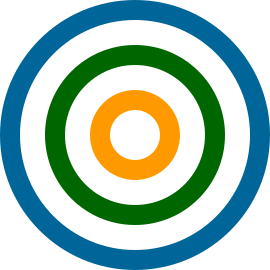“Again, Twitter’s interface was very intentionally designed to maximize the amount of time per day a person spends online. The Fediverse really doesn’t need that, but it has it anyway. That’s why I’m proposing that we reevaluate the way we design Fediverse interfaces and clients in light of how we can best strike a balance between creating a positive experience and one that puts the well-being of the person using your product first.”
Very interesting topic. I’m curious which features of Lemmy could be considered dark patterns, and how we can avoid them.
I think lemmy already have a good amount of anti-design. The users don’t have a public visible karma pool, badges awarded, gold, etc. The voting system is used mostly to hide bad content, and not to sort it.
We also recently added a user setting to hide scores, which is def better for people who want to avoid obsessing over points. that’ll be in the next release.
OwO thank you.
deleted by creator
After reading this, one idea we could add into lemmy UI to promote better digital well being, is to add a configurable daily site timer that warns you every minute you hit and spend above your chosen time limit. iirc both android and ios have something like that already for app usage.
I’d much prefer a different approach: I see timers as a nag, and suggest that I’m doing something wrong, which I’m not.
If, instead, Lemmy only showed my unread articles, unseen responses to comments and then stopped the feed and made me consciously select to load old articles or articles from communities I don’t subscribe to, then I have to opt in to negative behavior, rather than being nagged into opting out.
Kind of like how you have unread messages marked? As long as there is a way to clear it, or turn the setting off since I know that I often take long breaks from places and returning to a huge number might make me not want to engage…which I guess is a good thing? Hmm now I am not sure but do agree this design would be nice generally speaking
We are going to add a
Hide read postssetting sometime soon, there’s a github issue for it.
I think designing fediverse apps to have “anti-design” features is really important, don’t get me wrong, however once you take the corporation out of social media questions of “addiction” and what amounts essentially to recreational drug use get much murkier.
If a developer and users establish consent (something that is impossible on corporate social networks by design) than what is wrong with addictive fediverse interfaces?
I think it is VERY easy for this question to slip into outdated conversations about drug use and addiction because people aren’t realizing that in the case of non-profit social networks this IS a question of recreational drug use and addiction.
I am absolutely not trying to downplay the very real damage social media or drug addiction can impart on people’s lives (myself included) however its complicated.
The relevant question is do people stumble into drugs and become addicted by accident or is drug use and addiction primarily a coping strategy and indicator of trauma and pain?
I use to have that thought “is this homeless person just going to use this money I give them for drugs?” and it took me a long time to realize if that is what gets them through the next day who the fuck am I to judge. Perhaps their coping strategy isn’t very healthy for them, but honestly maybe their life is in such a difficult place it would be absurd to expect someone not to seek out that kind of relief. Denying them that drug perhaps does nothing for their quality of life.
I think questions of WHY someone seeks out addictive experiences go far beyond user interface design but the flip side of that is if we ignore the root causes of those things and strip addiction out of user interface design we are potentially just robbing people of a healthier outlet to use a drug they feel that they need.
In my opinion the dark truth about social media addiction is that it wouldn’t be anywhere near as much of a problem if people were happy and healthy. Modern society, at least in the US is ripping people apart on countless different levels, from the cruelty of denying basic needs to people all the way up to ensaring people in extremely well paying jobs that take up their whole life and destroy them.
Many days off all I can do is sit on my couch and blob out on my phone and that isn’t necessarily the fault of my phone. Take my phone away and you just have a sad broken person who has to turn somewhere else with an addictive loop for something to give me relief. I don’t necessarily need less addictive apps, I need a higher quality of life.
What I am trying to say is that I think developers need to think about establishing consent with users and empathetically providing them addictive experiences when they need it (aka good video games). There are definitely problems with addiction in apps but they are DWARFED by the brutality of modern life.
I’ve spent a lot of time researching “anti-designs”, or prosocial design features. https://www.prosocialdesign.org/ has a brief list of a few good prosocial interventions.
I highly recommend listening to the Center for Humane Technology’s “Your UnDivided Attention” podcast. It is easily accessible, and an excellent resource to learn about designs that could make social media platforms healthy, and non-addictive. They interview engineers and designers who work for Facebook, Twitter, Google, et al., and talk about all sorts of healthier designs for these platforms that have been researched, tested, and intentionally NOT implemented because addiction has proven crucial for turning a profit with these websites.
For years Facebook, Twitter, Google, and the rest have been pouring money into finding an alternative revenue model which does not require addicting and abusing users, but so far I’m not aware that they’ve had much success. It seems the only viable for-profit social media model is to implement addictive design features while conditioning each user to become more predictable, then selling access to manipulate users.
deleted by creator
Hi @Jeffrey@lemmy.ml nice to see you here :) Your Pro Social Design site is a beauty. I really, really like the way this is set up as pattern library that can be extended, and is also evaluating the quality and effectiveness of the patterns contained within. Excellent work!
Hi Arnold, I was excited to see you on here as well!
I can’t take credit for prosocialdesign.org, though. I didn’t make the site.
Yah the elephant in the room is that you can either have a social network be healthy for its users or have it be profitable. Pick one.
Here’s the Hacker News discussion on the same article, with about a 100 comments on it: https://news.ycombinator.com/item?id=26825704
Some Lobsters comments as well : https://lobste.rs/s/8dnful/ethical_anti_design_designing_products
This is very important. When I first joined the Fediverse via Mastodon, there were a few really great folks kicking around on there that ended up having to leave out because they were interacting with the platform in pretty unhealthy ways.
Ethical platforms absolutely need to be intentionally designed to reduce the risk of unhealthy use. It’s especially important because people are typically coming from closed platforms that have trained them to use them in these very unhealthy ways. Ethical platforms need to be intentional to break this programming.
Also:
People who grew up playing the Wii might remember it…
Oof
This is a bit of a catch-22 situation, isn’t it? In the end there is a sort of evolution like competition between different social media offerings, and the less addictive ones tend to go the way of the dodo precisely because they are less addictive.
I think the problem can only be solved at a personal level. Addictions are in nearly all cases a counter-productive problem or stress management technique. So you need to break the vicious cycle first and then the addictive qualities of social media become mostly irrelevant.
For corporate social media it is definitely a competition, but I dont think it makes sense to see the fediverse in the same way. We dont make more money from having more users, in fact having more users results in higher hosting cost and more moderation effort. Maybe there will be more donations, but thats far from certain. So I am totally happy even if Lemmy doesnt grow, as long as it provides an alternative space that some people find useful.
True, but even if your are not in it for commercial gain you are still kind of competing for users as any social media will be judged by users according to its relative number of users (sadly).
I dont really care how others judge Lemmy. Its much more important how the Lemmy users think.
More users also mean more potential contributors (after all existing contributors can’t work on the project forever ), it also means more content which means a higher probability that a certain person will find interesting content.
I dont mean to say that having more users is bad, I guess what I want to say is that Lemmy is already growing quite nicely on its own, so I dont see any need to make it more mainstream or anything like that.
That is becaus in the end people get what tey look for with their actions and choices, no matter how many clients are developed with a nn adictive interface, if what people choos with their actions is adictive cliente there is nothing you can do in the long run.
Is true what you say in the 2nd paragraph, so the best we can aim for is to make good and non adoctive fediverse clients fore those willing to have apps like that
Another really critical consideration is the perception gap. That is when groups believe their opponents hold more extreme views than they really do. e.g. Some respondents reported that they believe as many as 50% of their political opponents feel political violence is justified, in reality fewer than 5% of Democrats and Republicans feel political violence is justified.
All major social media sites have a hyper-polarizing affect on users, and this is achieved by grossly distorting reality by presenting the most sensational bad-faith content.
Sending out surveys to gauge perception gap in a community can be a good metric for determining whether a platform is promoting harmful or inaccurate perspectives. I don’t know if Lemmy or the Fediverse is large enough, or cohesive enough yet to properly survey, but I think that eventually monitoring user’s beliefs about other user’s beliefs will be useful in guiding content policies / moderation practices that foster constructive discussion.
I think such a survey is a very interesting idea, I would love to see one on Lemmy and the fediverse.
This is a huge research topic, unfortunately it’s mostly done by hobbyists and/or companies, ironically. I hope my university’s Human Centered Computing dept takes a step up here.
This “Why scientists don’t actually know if social media is bad for you” just came across my RSS [1]. I don’t agree with it, but its helpful to know what you are up against. It came through the Oxford International feed (Mozilla’s Mitchell Baker is an advisor to them). It was written by Oxford International researcher Prof Andrew Przybylski for BBC Science Focus.
But that doesn’t stop people claiming that cyberbullying causes suicides, even though there’s no evidence to prove it. You look at reasons why young people take their lives and it’s test scores or exams, it’s someone close to them taking their own life or it’s drug- and alcohol-related. Those are the three main attributable causes. There’s no evidence that social media is part of any of them.
Now, I can either adopt false confidence and tell you social media might be a problem (and possibly drop the word ‘might’ for greater impact – and there’s an entire cottage industry that tries to do that) or I can be honest with you and say I don’t know because scientists like us can’t see over the walls of the social media companies.
…
Whether you’re a grown up or a kid, ask yourself why you’re using social media. Is it because you want to, or because you feel you have to? It doesn’t necessarily matter how much time you spend ‘doomscrolling’ on Twitter or dancing on TikTok, but if you’re doing it because you feel you have to and it’s making you unhappy, you may want to try and stop.
- Why scientists don’t actually know if social media is bad for you: https://www.sciencefocus.com/future-technology/why-scientists-dont-actually-know-if-social-media-is-bad-for-you/
Some clients have taken some steps. An alternative web client for Mastodon called Pinafore has a ton of wellness options. I’d like to see all clients adopt these, especially the main web clients.
I like to think of it as refocusing on what matters. Mainstream social media focuses on profits and how to increase them. Instead we should be focusing on how to engage people, share their stories, and so forth. I see further down, pro social is a good way to put it.
I kinda don’t like the term anti design because it feels very nefarious and aggressive, plus I think of anti design as in “the post button is hidden on the screen somewhere” or “we will put two very similar colors as the default background/text” but I do like the point the article makes













